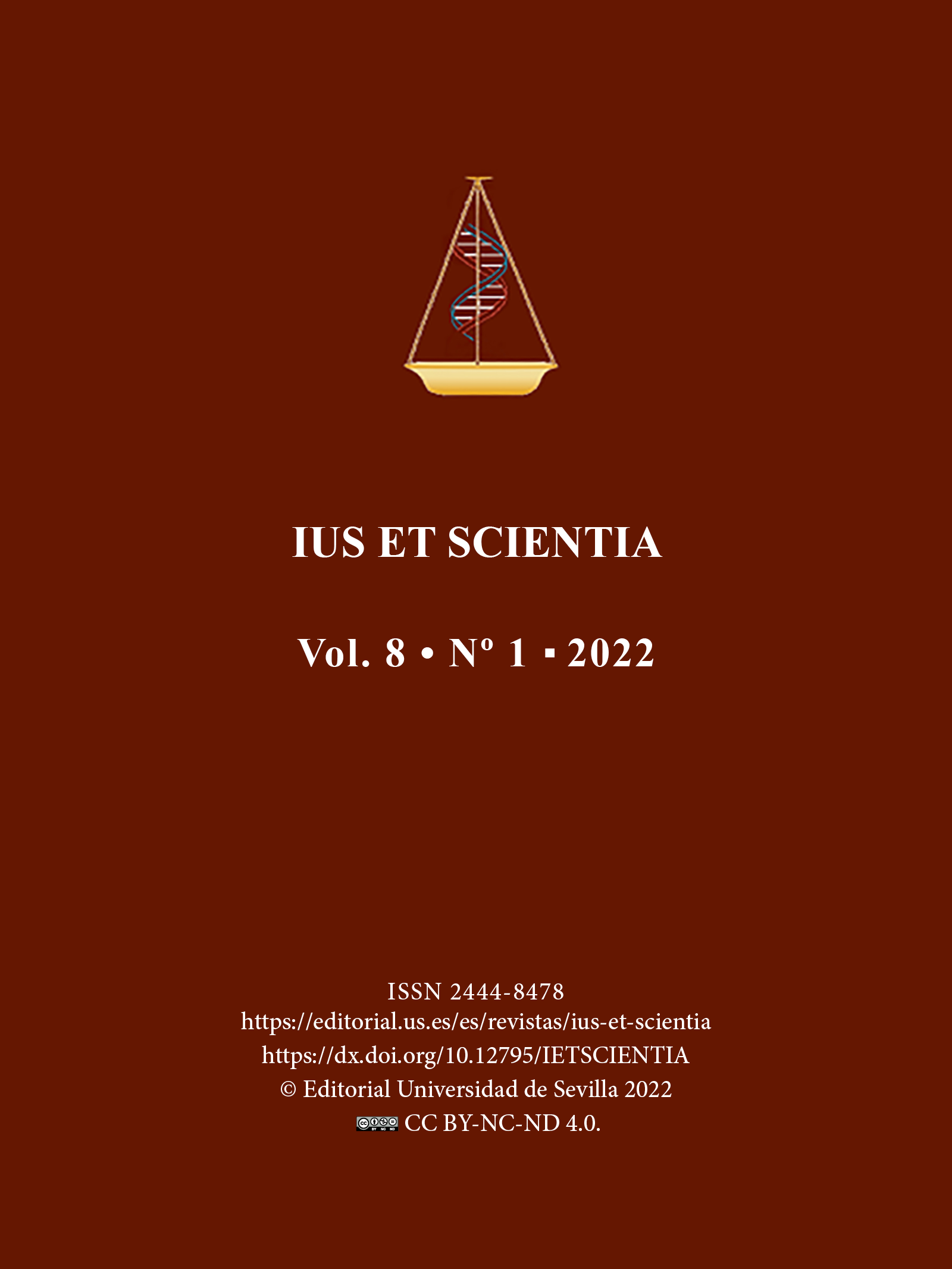The intersection between technology and evidence. Communications interception in Mexico
DOI:
https://doi.org/10.12795/IETSCIENTIA.2022.i01.07Keywords:
Electronic devices, Digital evidence, Communications interception, Electronic evidence, Technology and evidenceAbstract
In today’s world, new ways of verifying ilegal conduct carried out with and through the use of technologies have emerged. This article analyzes the instrumental nature of tecnhology as a support for the law in the prosecution and prosecution of criminality. Specifically, its role in obtaining pieces of evidence within a judicial process and the search for truth. The paper consists of two parts. The first explores the importance of using technological instruments and digital tools to investigate forms of illicit conduct. It explains electronic evidence, ways of obtaining, offering and incorporating it into Court. Having in mind the increasing use of technological means in criminal investigation, the second part explains communications interception and the impact it has on fundamental rights in Mexico.
Downloads
References
Arazi, R. (2008). Prueba ilícita y prueba científica. Rubinzal Culzoni editores. p. 29
Caro Coria, D. (2006). Las garantías constitucionales del proceso penal, disponible en https://bit.ly/2GuYkb2
Cossío, J. et al. (2017). El uso de evidencia científica y opinión experta en las sentencias de la Suprema Corte de Justicia de la Nación. México. Tirant lo Blanch. p. 5.
Rodríguez Mourillo, J. et al. Derecho penal e internet. En Régimen Jurídico de internet. Madrid. Editorial la Ley. Colección de Derecho de las Comunicaciones. pp. 288, 289.
Cremades García, J., Fernández Ordóñez, M. A., & Illescas Ortiz, R. (2009). Régimen jurídico de internet/coordinadores, Javier Cremades, Miguel Angel Fernández-Ordóñez, Rafael Illescas.
De la Rosa, P. (2019). Las tecnologías, el ciberespacio y el derecho penal. Editorial Porrúa.
De Urbano Castillo E. (2009). La valoración de la prueba electrónica. Valencia. Tirant Lo Blanch. p.54.
Delgado Martín, J. (2017). La prueba digital. Concepto, clases, aportación al proceso y valoración, Diario la ley, no. 6, sección ciberderecho, España. editorial Wolters Kluwer.
García Ramírez, S. (2016). El debido proceso. Criterios de la jurisprudencia interamericana. México. Porrúa. 3 ed., 2016, p. 14-16.
Goodman M. (2003). Cibercriminalidad, INACIPE. p. 8.
INEGI. (2019). Censo nacional de impartición de justicia federal 2018.
Jijena, R. & Valdés, T. (2003). El derecho y la sociedad de la información la importancia de internet en el mundo actual. México. Tec de Monterrey. 4 (67) p.12.
López Alonso, C. (2006). El correo electrónico. Estudios de lingüística del español, vol.24.
Lucas, A. S., Cassany, D., Fretes, G., Knobel, M., Lankshear, C., Meneses, J. & Sigalés, C. (2014). Sociedad del conocimiento, tecnología y educación. Ediciones Morata.
Muñoz Conde, F. (2008). De las prohibiciones probatorias al Derecho procesal penal del enemigo, editorial hammurabi. p. 68. Núñez Jover, J. (1989). “Ciencia, Tecnología y Sociedad”, Problemas Sociales de la Ciencia y la Tecnología. La Habana. GESOCYT. Editorial Félix Varela.
Parra, J. (2006). Manual de Derecho Probatorio. Colombia. Ediciones LTDA. p. 73.
Pico i Junoy, J. (2017). Presentación de Peritaje y prueba pericial. Barcelona. Bosh.
Ruiz Jaramillo, L. (2007). El derecho a la prueba como un derecho fundamental. Facultad de Derecho y Ciencias Políticas. Universidad de Antioquia. 64, nº 143 p. 188.
Yáñez, I. C., Zermeño, M. G. G., & Chávez, M. M. P. (2015). Competencias digitales en el estudiante adulto trabajador. Revista Interamericana de Educación de Adultos, 37(2), 10-24.
Vaquera, M. L. C., & María, L. (2014). El discurso del WhatsApp: entre el Messenger y el SMS. Oralia, 17, 85-114.
Published
How to Cite
Issue
Section
License
Copyright (c) 2022 PAOLA DE LA ROSA RODRIGUEZ

This work is licensed under a Creative Commons Attribution-NonCommercial-ShareAlike 4.0 International License.
Those authors being published in this journal agree to the following terms:
- Authors retain their copyright and they will guarantee to the journal the right of first publication of their work, which will be simultaneously subject to license recognition by Creative Commons that allows others to share such work provided it is stated the author’s name and his first publishing in IUS ET SCIENTIA.
- Authors may take other non-exclusive distribution license agreements version of the published work (e.g. deposit in an institutional digital file or publish it in a monographic volume) provided it is stated the initial publication in this journal.
- It is allowed and encouraged that Author s disseminate their work via the Internet (e. g. institutional digital files or on their website) prior to and during the submission process, which can lead to interesting exchanges and to increase citation of the published work.
- Abstract 293
- PDF (Español (España)) 191
- HTML (Español (España)) 123





